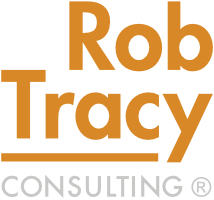“We’re having a hard time finding workers.”
That’s something heard from nearly every manufacturer in the U.S. When I visit with clients, I hear the lamentations about the school system pushing everyone to a four-year degree, the challenge of millennials, the perception of manufacturing going to China, and the evolution of teens migrating from working on cars to playing Xbox. There’s some truth in all of these underlying factors, but grousing about these macro-forces does not solve the problem. Strategic planning does.
Innovative manufacturers are trying a variety of approaches. Some have created internal development programs. Others have partnered with a local vocational college. Others still have started to increase pay and benefits or even reduce hiring standards. These changes often happen when companies have their back against the wall, and they need some workers immediately. These are ad-hoc solutions targeted at getting an immediate resolution to a staffing shortage, and – at best – they experience mixed success.
I don’t see the workforce situation improving in the near future. It’s time for manufacturers to move hiring and retention to the foreground with strategic planning. Relying on human resources to place ads, interview, and hire is insufficient. Companies that do so will find themselves scaling back on their growth because they simply won’t find the people needed to support their growth.
The disciplines of strategic planning that have been applied to a competitive position in the marketplace can be translated into strategic planning for the workforce.
- Identification of target customers translates into the identification of target hiring populations
- Long-term revenue goals translate into long-term staffing needs
- Marketplace differentiators translate into differentiators in the eyes of employees and recruits
- Future-state machines and process capabilities translate into the processes and capabilities required to execute the people strategy
The tools used in market-facing strategic planning (SWOT, Porters 5 forces, etc…) could easily be adapted to workforce strategic planning. The key is for the leadership to dedicate time and energy to think strategically about their workforce and align with how it is going to compete for workers. Once the plan is set, the execution must be managed in concert with the market-facing strategic plan.
[Like what you’re reading? Sign up to learn more.]
Going forward, growing your workforce is going to be every bit as challenging as growing your market share and it deserves the same level of deliberate, diligent planning. In days gone by, market growth dominated strategic thinking. Now it’s time to put workforce growth on equal footing. The two are co-dependent after all; a strong market-facing strategy can drive profitable growth, but it will only become a reality with the right workforce in place to deliver on customer promises.
Quote of the day:
“Strategy is about making choices, trade-offs; it’s about deliberately choosing to be different.”
— Michael Porter
